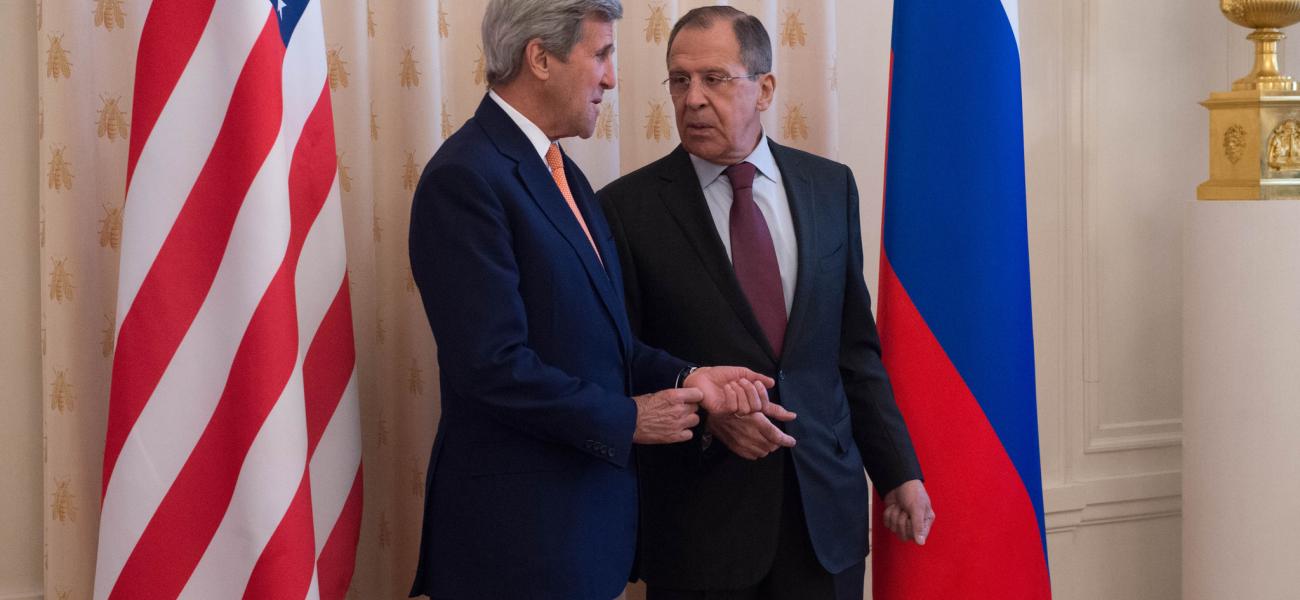
US-Russian Relations Beyond Ukraine: Realities and Recommendations Moving Forward
This report was originally published by the Center on Global Interests. A PDF of the full report can be downloaded below.
The Russian-American relationship has reached its lowest point since the end of the Cold War. But while the conflict in Ukraine was the catalyst for pushing tensions over the edge, a number of more pervasive issues, such as disagreements over bilateral arms control, European security, and crises in the Middle East continue to drive Moscow and Washington further apart.
In his report for CGI, Richard Weitz, Senior Fellow and Director of the Center for Political-Military Analysis at Hudson Institute, traces the causes of the current conflict and provides recommendations for the post-Ukraine development of U.S.-Russian relations. The author concludes that Russia is a pivotal swing state in shaping the future world, and if engaged wisely it could become a pillar–rather than a spoiler–of global stability.
Report Highlights
- The U.S.-Russian relationship is characterized by an asymmetry of influence and interest. While Moscow attributes excessive hostility to Washington’s policies, the main driver of U.S. policy is American indifference toward Russia. Both sides find it hard to manage a relationship in which they are neither adversaries nor allies, a fact reflected in opinion polls that show fluctuating attitudes in how Russians and Americans see each other.
- Beyond Ukraine, the underlying source of conflict is the lack of stakeholders on either side who stand to benefit from improved relations. Social and economic cooperation between the United States and Russia has been broad but shallow, failing to create a foundation for lasting partnership. A particular problem is the lack of ties between the U.S. and Russian national legislatures, business communities, and cultural institutions.
- Domestic politics and personalities have minimal impact on U.S.-Russian relations. While foreign-policymaking under Obama has concentrated around the National Security Council, the Russia expertise of individual advisers has not correlated to improvements in the relationship. Meanwhile, the relative lack of domestic constraints on Putin has allowed him to be both confrontational and pragmatic as the need arises.
Looking Ahead: 3 scenarios for the short term
- Limited partnership and conflict: In the best scenario, U.S.-Russian cooperation would be based on shared interests rather than common values. In practice, this would mean cooperation on counterterrorism, nuclear nonproliferation, joint development of the Arctic and the pursuit of indirect means to balance China’s rise, but little progress on bilateral arms control or outstanding issues of European security.
- Indifference and regional retrenchment: Russia would abandon Western aspirations and continue to develop its regional integration projects, while U.S. influence in the former Soviet space would wane due to limited resources and competing priorities. EU and NATO enlargement into the former Soviet region will effectively cease, with Ukraine becoming a buffer state.
- Sustained mutually harmful confrontation: the Obama administration would continue the heavy use of sanctions in its Russia policy and ramp up support for EU and NATO enlargement. Russia could respond by annexing more territory in Ukraine and Georgia and probing for weakness in the Baltic Stats. Russia may also break with the United States on Iran and exploit U.S.-China tensions, something it has generally avoided doing.
Recommendations for the United States
- Control the sanctions spiral: follow the European example and include “sunset provisions” that would make sanctions automatically expire unless renewed. Long-lasting sanctions reduce Russia’s integration with the West, which is bad for European stability.
- Maintain credibility among military allies: put more NATO troops in the alliance’s eastern members and sustain pressure on European allies to increase military spending. At the same time, develop a non-military strategy to manage a resurgent Russia, including ways to engage the post-Putin generation of Russian leaders.
- Adopt a policy of strategic engagement with Russia’s neighbors: accept the right of Russia’s neighbors to join the Eurasian Union provided that Moscow respects their economic and political freedoms. The United States must develop a policy toward the CSTO, the SCO and the Eurasian Union, as it may become increasingly hard to ignore these bodies if Russia continues to strengthen their capabilities.
- Maintain support for Ukrainian sovereignty and development: keeping Ukraine independent of Russia is an enduring U.S. priority, as it would create a geographic barrier to Moscow’s power projection in Europe. The optimal U.S. strategy would include substantial economic and good-governance assistance in partnership with the EU. Furthermore, the United States should think creatively about how to give Russia a greater stake in the European security order, perhaps by taking up Medvedev’s idea of a European Security Treaty.
- Encourage positive relations between Russia and U.S. allies in Asia to balance against China: this would include encouraging Japanese-Russian reconciliation over the Kuril Islands, avoiding heavy pressure on South Korea to sustain its sanctions against Russia, and accepting Russia’s deepening ties with North Korea as a potentially positive development that would decrease the risk of Pyongyang resuming its nuclear program.
Richard Weitz
Richard Weitz is a senior fellow and director of the Center for Political-Military Analysis at Hudson Institute.
Photo credit: flickr photo by U.S. Department of State shared as a United States Government Work (public domain)
